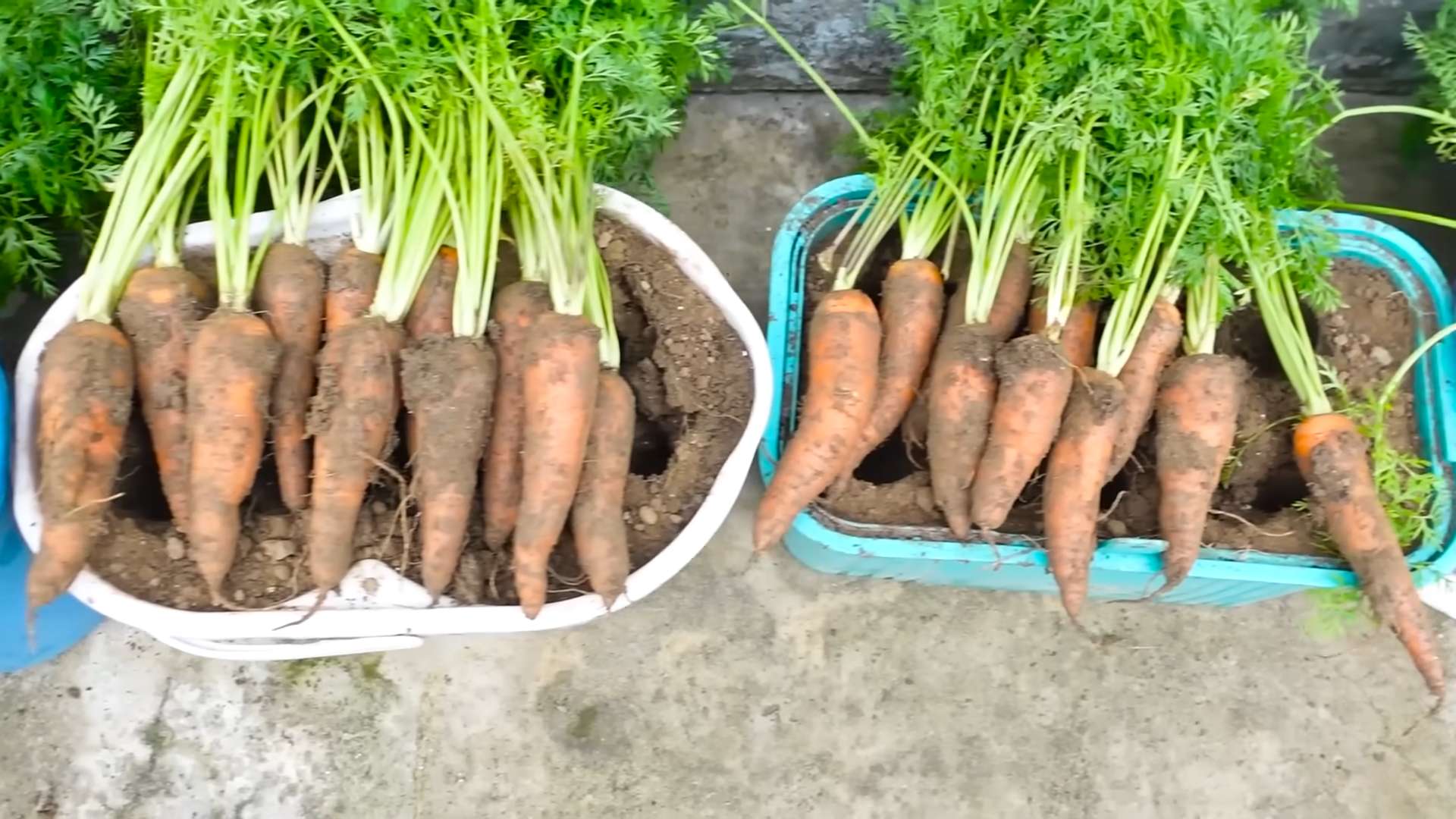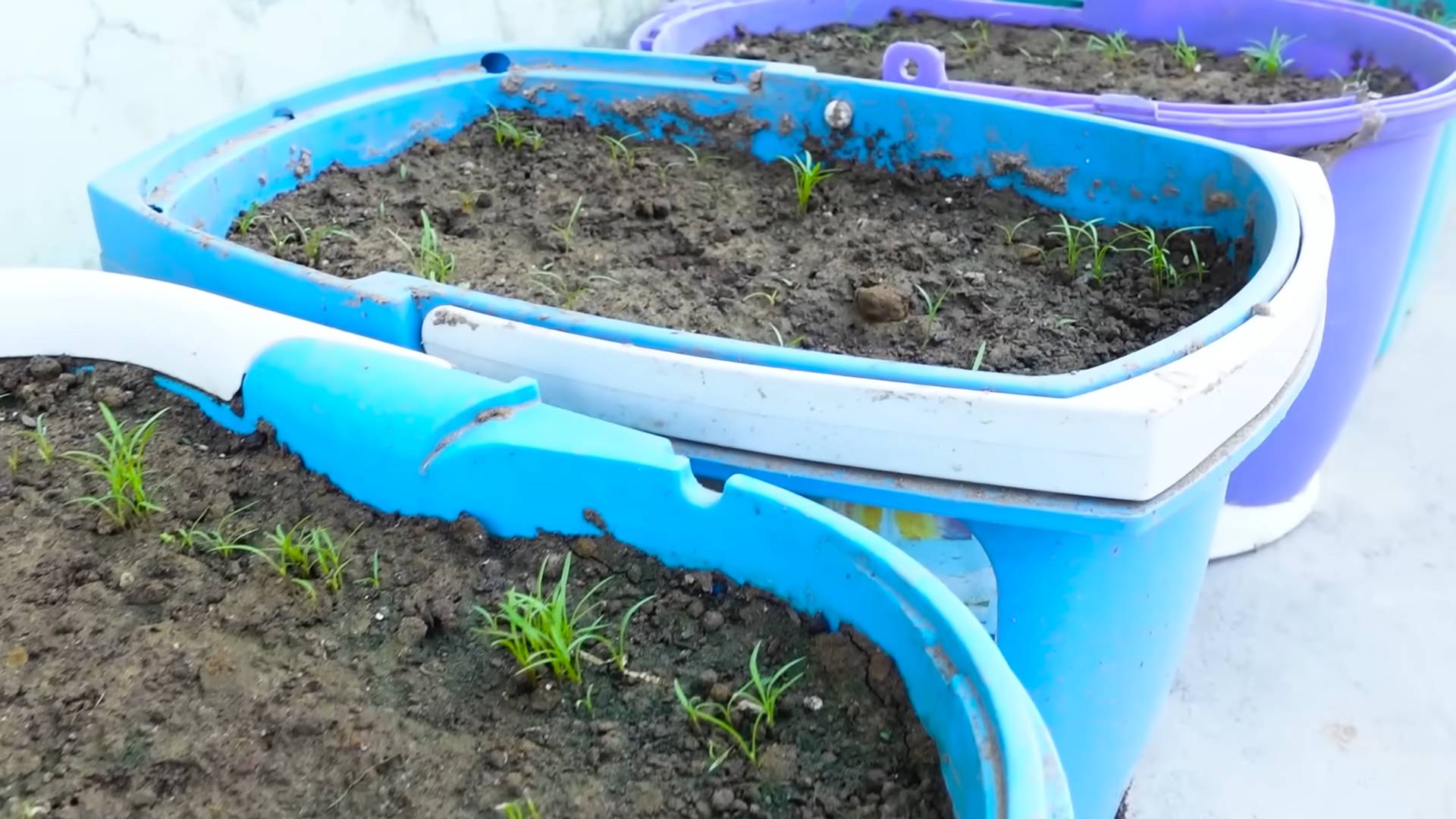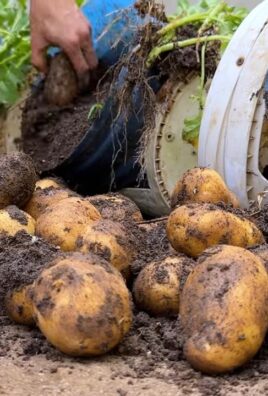Grow Carrots at Home: Your Guide to a Delicious and Rewarding Harvest
Have you ever dreamed of biting into a perfectly sweet, crunchy carrot, knowing you grew it yourself, from seed to table? Well, dream no more! This article is your complete guide to Grow Carrots at Home, revealing simple yet effective tricks and DIY solutions to help you cultivate a bountiful harvest right in your own backyard or even on a sunny balcony.
Growing your own food has a rich history, connecting us to ancient agricultural practices and fostering a deeper appreciation for the natural world. From the earliest civilizations cultivating crops to the modern-day resurgence of home gardening, the act of nurturing plants from seed to maturity offers a profound sense of accomplishment and connection to the earth. And let’s be honest, there’s nothing quite like the taste of homegrown produce!
Why Grow Your Own Carrots?
Beyond the undeniable satisfaction of harvesting your own vegetables, growing carrots at home offers several key advantages. You control the quality of your soil, ensuring your carrots are free from harmful pesticides and chemicals. You can also choose unique varieties not always found in supermarkets, experimenting with different colors and flavors. Plus, imagine the cost savings! Grow Carrots at Home and enjoy fresh, delicious carrots all season long, significantly reducing your grocery bill.
This article will walk you through everything you need to know, from selecting the right seeds and preparing your soil to dealing with common pests and harvesting your perfect carrots. Get ready to roll up your sleeves, get your hands dirty, and discover the joy of growing your own delicious, homegrown carrots. Let’s get started!

Growing Carrots at Home: A Complete Guide
I’ve always loved the sweet crunch of a freshly picked carrot, and nothing beats the satisfaction of growing your own. It might seem daunting at first, but trust me, growing carrots at home is easier than you think! This guide will walk you through the entire process, from seed to harvest.
Choosing Your Carrot Seeds and Location
- Select the right variety: There are tons of carrot varieties available, each with different characteristics like size, color, and growing time. For beginners, I recommend choosing an easy-to-grow variety like Nantes or Chantenay. These are known for their shorter growing season and tolerance to less-than-perfect conditions. Check your local garden center for recommendations based on your climate.
- Find a sunny spot: Carrots need at least six hours of direct sunlight per day. Choose a location in your garden that receives plenty of sun. Avoid areas that are consistently shaded.
- Prepare the soil: This is crucial! Carrots need loose, well-drained soil. Hard, compacted soil will result in stunted, misshapen roots. Amend heavy clay soil with plenty of compost or other organic matter to improve drainage and aeration. Sandy soil might need the addition of peat moss or other organic matter to retain moisture.
- Check soil pH: Carrots prefer a slightly acidic to neutral soil pH (6.0-7.0). You can purchase a soil testing kit to check your soil’s pH. If it’s too acidic or alkaline, you can adjust it using lime or sulfur, respectively. Follow the instructions on the product packaging carefully.
Sowing Your Carrot Seeds
- Prepare the seedbed: Loosen the soil to a depth of about 12 inches. Remove any rocks or debris that could interfere with root growth. For a larger area, you can use a garden tiller or cultivator. For smaller areas, a garden fork works well.
- Sow the seeds: Carrot seeds are tiny! I recommend mixing them with a little bit of sand to help with even distribution. Sow the seeds about 1/4 inch deep and 1-2 inches apart. Don’t plant them too deep, or they might not germinate. If you’re planting in rows, space the rows about 12 inches apart.
- Water gently: After sowing, water the seeds gently using a watering can with a rose head. Avoid using a strong jet of water, as this could wash away the seeds. Keep the soil consistently moist but not waterlogged.
- Thinning: Once the seedlings emerge (usually within 1-3 weeks), thin them out to about 2-3 inches apart. This gives each carrot enough space to grow to its full size. Gently pull out the weaker seedlings, being careful not to disturb the roots of the remaining plants.
Carrot Care and Maintenance
- Watering: Consistent watering is essential, especially during dry periods. Aim for about 1 inch of water per week. Water deeply and less frequently rather than shallowly and often. Mulching around the plants can help retain soil moisture.
- Weed control: Regularly remove weeds to prevent them from competing with your carrots for water and nutrients. Mulching can also help suppress weed growth.
- Pest and disease control: Carrots are relatively pest-resistant, but they can be susceptible to certain diseases like leaf blight and root rot. Good soil drainage and proper watering are crucial for preventing these problems. If you notice any signs of disease, remove affected plants immediately.
- Fertilizing: Carrots don’t require heavy fertilization. A light application of balanced fertilizer early in the growing season is usually sufficient. Over-fertilizing can actually lead to misshapen roots.
Harvesting Your Homegrown Carrots
- Check for maturity: Carrots are typically ready for harvest in 70-90 days, depending on the variety. You can gently pull on a few carrots to check their size and maturity. If they feel firm and are the desired size, they’re ready to harvest.
- Harvesting: Use a garden fork or trowel to carefully loosen the soil around the carrots. Gently lift the carrots out of the ground, being careful not to damage them. If you encounter any stubborn carrots, you can use a small hand trowel to help loosen the soil around them.
- Cleaning: Once harvested, brush off any excess soil from the carrots. You can wash them thoroughly under running water if desired.
- Storing: Store your freshly harvested carrots in a cool, dark, and humid place. You can store them in a plastic bag in the refrigerator for up to a few weeks. For longer storage, consider storing them in a root cellar or other cool, dark location.
Troubleshooting Common Carrot Growing Problems
Splitting Carrots:
This often happens due to inconsistent watering. Ensure consistent moisture throughout the growing season to prevent splitting. Hard soil can also contribute to splitting, so make sure your soil is loose and well-drained.
Small Carrots:
This can be caused by overcrowding, poor soil conditions, or insufficient nutrients. Ensure proper spacing when planting, amend the soil with compost, and consider a light fertilization.
Pests and Diseases:
Regularly inspect your plants for signs of pests or diseases. Remove affected plants immediately to prevent the spread of disease. Consider using organic pest control methods if necessary.
Remember to have fun and enjoy the process! Growing your own carrots is a rewarding experience, and the taste of a homegrown carrot is truly unbeatable.

Conclusion
Growing your own carrots at home is a surprisingly rewarding experience, far more accessible than you might think. This DIY trick offers a unique connection to your food, allowing you to savor the sweet, crisp taste of homegrown carrots knowing exactly how they were cultivated. Beyond the delicious results, the process itself is incredibly satisfying. Watching those tiny seeds sprout and gradually develop into vibrant orange roots is a testament to the power of nature and your own green thumb. The sense of accomplishment is unparalleled, and the fresh, flavorful carrots you harvest will be a delicious reward for your efforts. This simple DIY method allows you to bypass the often-questionable practices of commercial farming, ensuring you get the highest quality, freshest carrots possible. It’s a project that’s perfect for families, offering a fun and educational opportunity to teach children about where their food comes from.
Don’t be intimidated by the idea of growing carrots. This method is designed for beginners, requiring minimal space and effort. Even if you have a small balcony or just a sunny windowsill, you can successfully grow your own delicious carrots. Experiment with different carrot varieties – there’s a wide range of colors and sizes to explore, from classic orange to vibrant purple and even white! You can also try different growing mediums, such as containers with specialized soil blends or even repurposed materials like old buckets or grow bags. Consider companion planting, incorporating herbs like rosemary or thyme nearby to deter pests and improve soil health. The possibilities are endless, and the journey of discovery is half the fun!
We strongly encourage you to try this simple and effective method for growing carrots at home. Share your experience with us! Post pictures of your thriving carrot patch on social media using #GrowCarrotsAtHome and tag us. We love seeing your successes and hearing about your gardening adventures. Let’s build a community of home gardeners, sharing tips, tricks, and the joy of harvesting our own delicious, homegrown produce. Remember, even small successes contribute to a larger movement towards sustainable and healthy living. So grab your seeds, get your hands dirty, and embark on this rewarding journey of growing your own carrots. You won’t regret it!
Frequently Asked Questions
What type of soil is best for growing carrots?
Carrots thrive in loose, well-drained soil that’s free of rocks and clumps. Heavy clay soil can hinder root development, resulting in stunted or misshapen carrots. Sandy loam is ideal, but you can amend heavier soils by adding compost or other organic matter to improve drainage and aeration. Ensure the soil is rich in nutrients to support healthy growth.
How much sunlight do carrots need?
Carrots need at least six hours of direct sunlight per day to grow properly. Choose a location in your garden or on your balcony that receives ample sunlight. If you’re growing carrots indoors, place them near a sunny window or supplement with grow lights to ensure they get enough light.
How often should I water my carrots?
Consistent moisture is crucial for carrot growth, but avoid overwatering, which can lead to root rot. Water deeply and regularly, especially during dry periods. The soil should be moist but not soggy. Mulching around the plants can help retain moisture and suppress weeds.
How long does it take for carrots to mature?
The time it takes for carrots to mature depends on the variety and growing conditions. Generally, it takes around 70-80 days for most carrot varieties to reach maturity. Check the seed packet for specific information on the expected harvest time for your chosen variety. You can start harvesting baby carrots earlier for a quicker reward.
What are some common problems when growing carrots?
Some common problems include pests like carrot root flies and diseases like leaf blight. Practicing crop rotation can help prevent diseases. Using row covers can protect plants from pests. Regularly inspecting your plants for signs of pests or diseases is crucial for early intervention. Addressing problems promptly can often save your crop.
Can I grow carrots in containers?
Absolutely! Container gardening is a great option for growing carrots, especially if you have limited space. Use deep containers (at least 12 inches deep) to allow for proper root development. Choose a well-draining potting mix and ensure the containers receive adequate sunlight.
What should I do with my harvested carrots?
Enjoy your fresh, homegrown carrots! You can eat them raw, roasted, boiled, or added to your favorite recipes. For longer storage, store them in a cool, dark, and humid place. You can also preserve them by canning or freezing.
What if my carrots are small or misshapen?
Small or misshapen carrots are often a result of poor soil conditions, such as compacted soil or rocks that restrict root growth. Ensure your soil is loose and well-drained. Also, make sure you thin your seedlings appropriately to give each carrot enough space to grow.




Leave a Comment